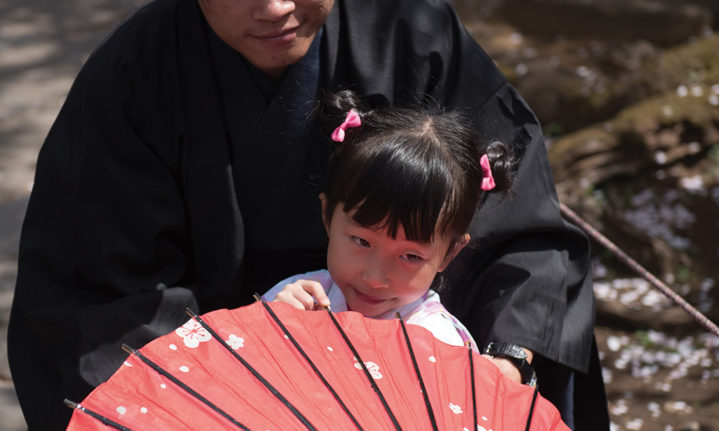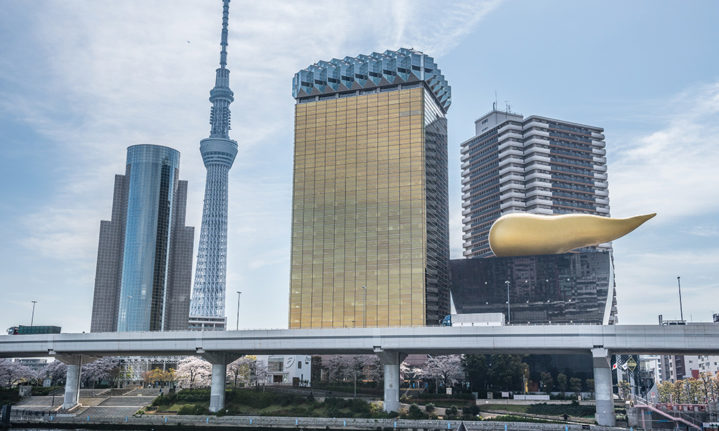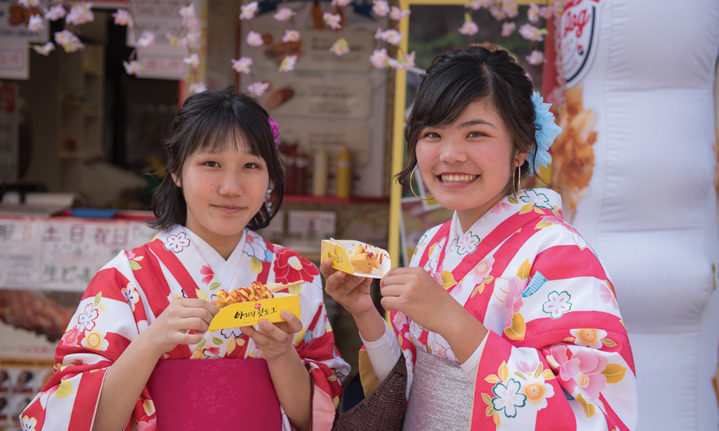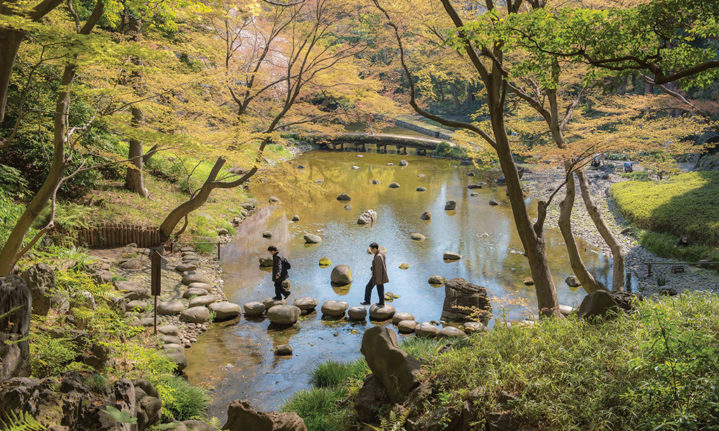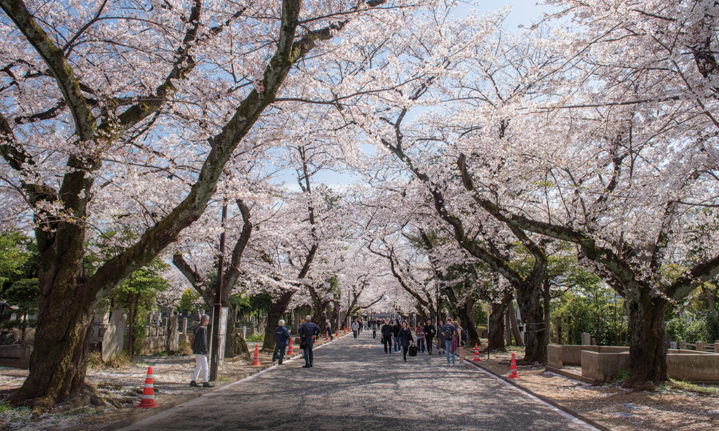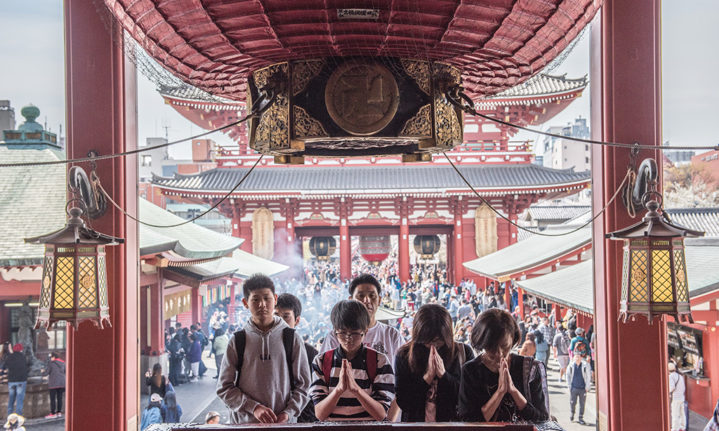July is Olympics month and the eyes of the world will be on Tokyo. This astonishing city dazzles with its blend of traditional culture and passion for anything new and cutting edge. A wide-eyed Justin Fox visited the city in the run up to the Games and lists his 10 favourite things to do around town.
Words & Photography: Justin Fox
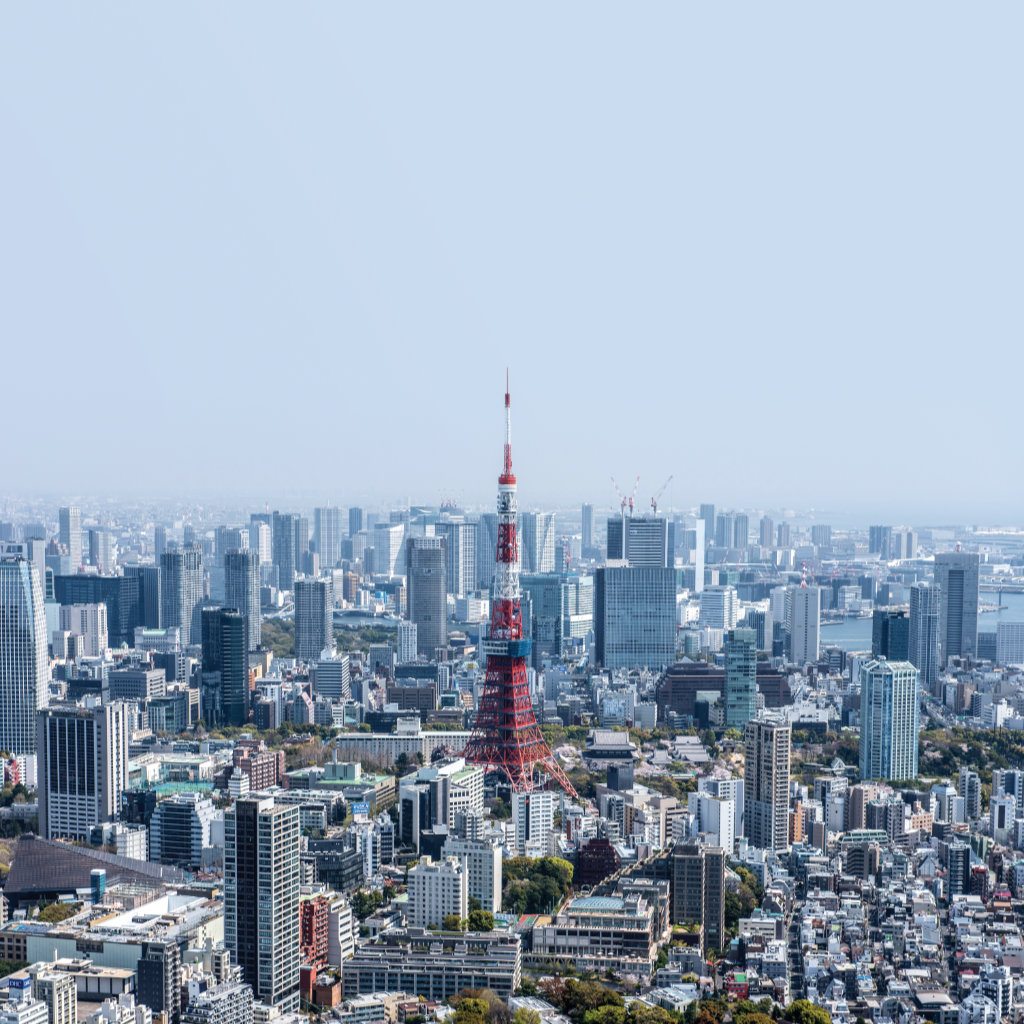
The Tokyo Tower, as seen from the Mori Tower. The 54-storey high Mori Tower is a fine place for panoramic city views and on a clear day you can see Mount Fuji on the horizon.
1. Controlled pandemonium
With a population of 37 million, Tokyo is a seething warren of humanity. Witnessing the mayhem is an attraction in itself. The best place to get a sense of the insanity is at Shibuya Crossing, thought to be the busiest intersection in the world with up to 3 000 pedestrians crossing each time the traffic lights change. I visited it at a relatively quiet time but was still transfixed by the tides of people – an avant-garde, urban ballet of outlandish proportions. I bought a coffee on the second floor of Starbucks, found a table and sat there marvelling at the colourful ebb and flow.
Another great spot to experience Tokyo’s beating pulse is the Shinjuku district, home to the world’s busiest railway station (with more than two million passengers a day). Shinjuku boasts the city’s largest entertainment and red-light zone, glittering with coloured LED lights and featuring innumerable restaurants, pubs, nightclubs, pachinko parlours (gambling arcades) and love hotels.

In late March Tokyo is transformed into an ethereal thing of beauty by its cherry blossoms.
Also in Shinjuku, you’ll find quaint Golden Gai, a collection of more than 200 tiny bars and eateries, some of them seating less than a dozen patrons. It has an old-world feel with narrow alleys and low-slung wooden buildings. Some bars are ‘locals only’ but those that welcome tourists have English signs on their doors.
2. Sensoji Temple
Tokyo’s most visited temple enshrines a golden image of Kannon (the Buddhist goddess of mercy), allegedly pulled from the nearby Sumida River by two fishermen in 628AD. The statue has remained in the temple ever since but is never on public display. The main entrance is via the busy shopping street of Nakamise and the scarlet Kaminarimon Gate. The temple itself is a magnificent, five-storey pagoda fronted by a large incense cauldron. Worshippers queue to pray and let the holy smoke waft over them, bestowing health.
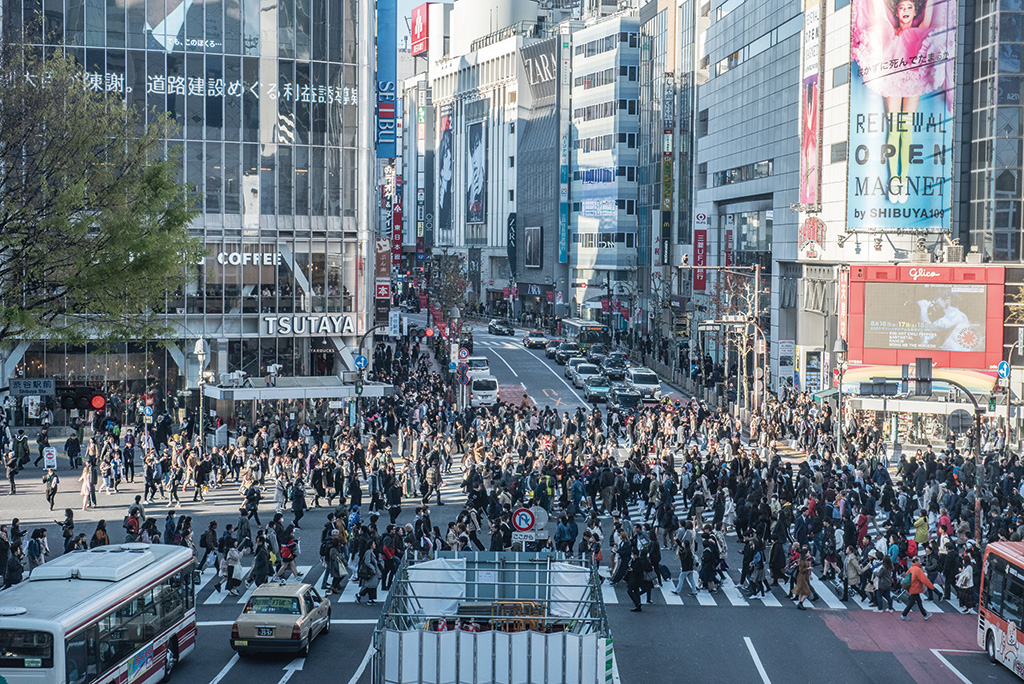
Up to 3 000 pedestrians traverse Shibuya Crossing at every light change.
3. Gorgeous Gardens
Japanese gardens are manicured havens of beauty and peace. Even in Tokyo’s pulsating heart, you’ll find these little sanctuaries of green. My favourite is Koishikawa Korakuen.Established in the 17th century, this formal strolling garden incorporates elements of Chinese and Japanese landscaping. Don’t miss the Engetsukyo (Full-Moon Bridge), dating from the early Edo period, and Tsutenkyo, a red wooden bridge.
Also lovely are the Hamarikyu Gardens, once the hunting grounds of the powerful Tokugawa Clan, members of whom ruled Japan as shoguns from 1603 to 1867. Today, it’s a landscaped park surrounded by a seawater moat fed by Tokyo Bay. In its midst is a traditional teahouse serving Japanese matcha and sweets, and it is here that the Tokyo Grand Tea Ceremony is held every October.

Koishikwa Korakuen is a formal strolling garden from the 1700s.
4. Omotesando Avenue
This broad, tree-lined boulevard is crammed with boutiques from the world’s top fashion houses. It’s an architectural wonderland with each designer trying to outdo the next. Every shape and contortion of glass, steel and concrete is on display in Omotesando. My eyes were out on stalks as I wandered the avenue, photographing highlights such as the Prada building (designed by Herzog & De Meuron), Dior’s flagship boutique (by Sanaa), the Hugo Boss building (by Norihiko Dan) and Tod’s boutique (by Ito Toyo).
Adjacent to Omotesando is Takeshita, one of the busiest and brightest shopping streets in Tokyo. This pedestrian alley cum fashion bazaar is home to the trendy and the weird. Think acid-trip kitten T-shirts and the craziest collection of shoes you’ll ever see. It’s a blend of newer stores selling youthful styles set beside shops specialising in the subcultures of past decades, such as Goth and Punk. Be prepared to rub shoulders with thousands of teenagers, but the spectacle is worth it.
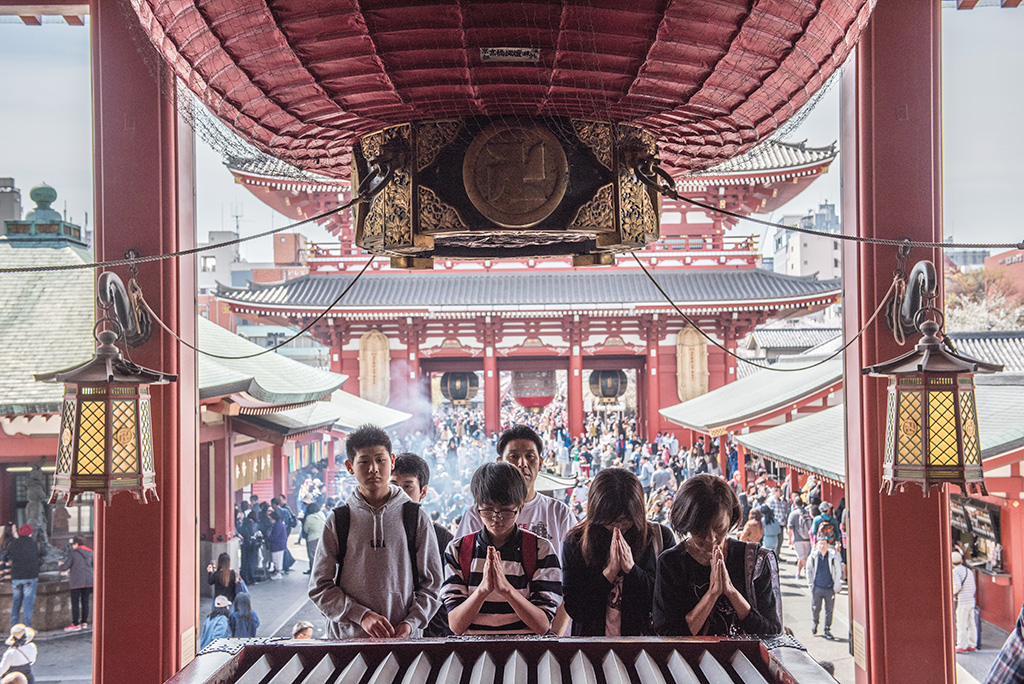
Holy smoke wafts over worshippers at Sensoji Temple.
5. Meiji Shrine
The city’s grandest Shinto shrine is dedicated to Emperor Meiji and Empress Shoken, under whose reign (1868–1912) Japan transformed from feudal isolationism to a modern nation state. Built in 1920, the shrine was destroyed by Allied bombing in World War II and reconstructed in 1958. The main shrine is built of cypress wood with a copper-plated roof and is reached via a long path, straddled by several tall wooden torii (entrance gates), through an enchanting forest. The Meiji buildings have an air of tranquillity about them – a sanctuary in the heart of this furiously bustling city. The shrine occupies only a small fraction of the sprawling grounds, planted with more than 100 000 trees sourced from across Japan.
6. Arts and culture
Tokyo allows you to experience the whole breadth of Japanese arts and culture. Centuries-old forms of performing arts still play out on stages and in Kabuki theatres, and sumo tournaments continue to draw vast crowds.
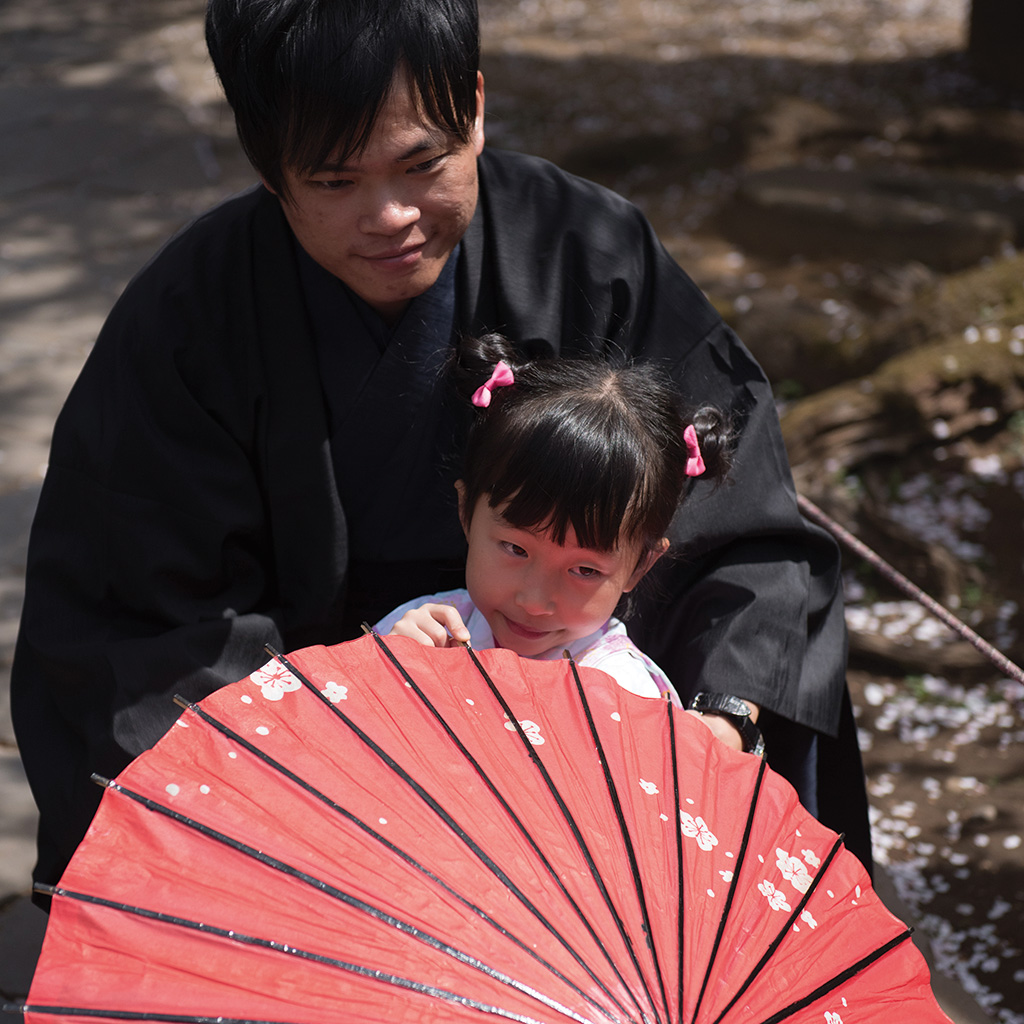
A father and daughter dressed in traditional costume to celebrate the cherry season.
The Tokyo National Museum should be your first port of call for a general overview. This palace of culture is home to more than 100 000 important works of Asian art. Indeed, it houses the world’s largest collection of Japanese art, including samurai swords, ancient pottery and textiles, Buddhist sculptures, ukiyo-e (woodblock prints) and sumptuous kimonos.
Next up, you should visit the Edo-Tokyo Museum which traces the city’s transformation from tidal flatlands to feudal capital and ultimately a modern metropolis. There are detailed scale re-creations of townscapes, villas and tenement homes, plus countless artefacts, artworks and old maps.
Also, don’t miss the National Museum of Western Art, designed by renowned Swiss architect Le Corbusier. Exhibition highlights include paintings by Impressionists such as Cézanne, Monet, Manet and Degas, while in the courtyard you’ll find sculptures by Rodin.
7. Imperial Palace
The Imperial Palace and its lovely, 17th-century parks occupy the site of the original Edo-jo, the Tokugawa shogunate’s castle, and is still used by the imperial family. This was once the largest fortress in the world but little remains today apart from the giant moat and stone walls. Don’t miss the Edo-era Fushimi-yagura watchtower and the Nijubashi Bridge (Double Bridge), a structure that takes its name from its reflection in the moat’s water.
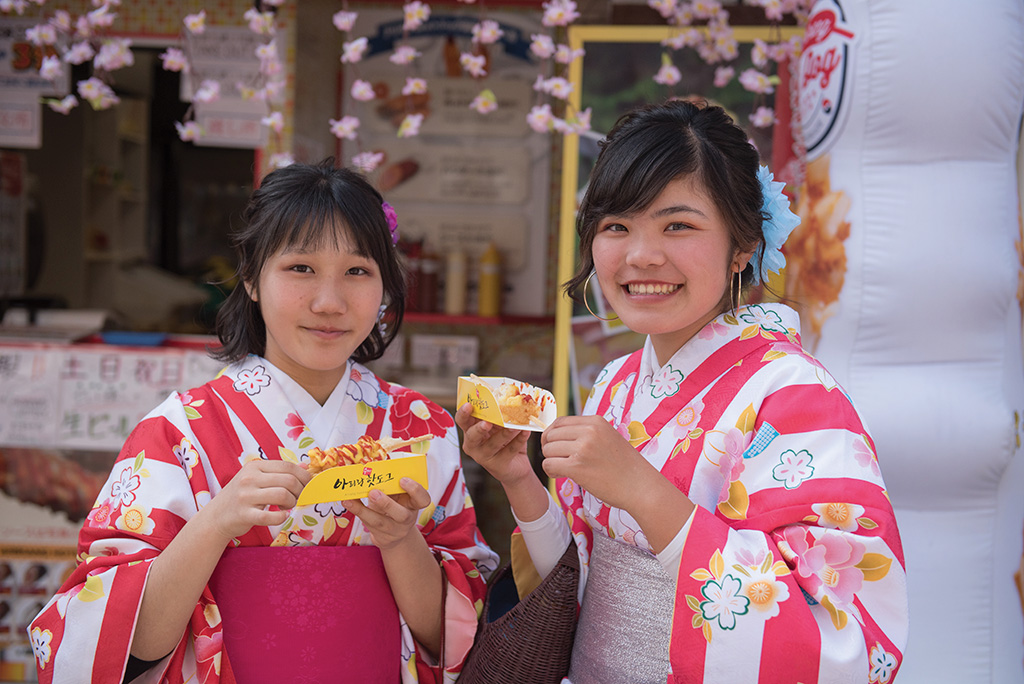
Teens and fast food are synonymous with Takeshita Street.
8. The Skytree
The Tokyo Skytree dominates the city skyline. This 634-metre, observation and communication tower rises out of the city’s Sumida district like a supersized Sputnik. Japan’s tallest structure (and the world’s tallest freestanding tower), was opened in 2012 and is one of Tokyo’s most visited attractions due to the spectacular views from its restaurant and observation decks. (Another fine place for panoramic city views is the roof of the 54-storey Mori Tower in Roppongi Hills, where I spent a morning photographing cityscapes with Mount Fuji shimmering on the horizon.)
9. Feast till you drop
The city has 160 000 restaurants, 230 of them with Michelin stars. From hole-in-the-wall noodle joints to world-class fine dining, Tokyo’s culinary scene is rightly famous. The city’s most renowned food is of course nigiri-zushi, the style of sushi most popular around the world. And the food here is consistently good, even in the most humble establishment, which is great if you’re a South African traveller on a tight budget. Be adventurous and treat yourself to a variety of tastes, flavours and culinary experiences you’ll never forget. For a comprehensive dining guide: goingawesomeplaces.com/ultimate-tokyo-japan-food-guide-where-and-what-to-eat/
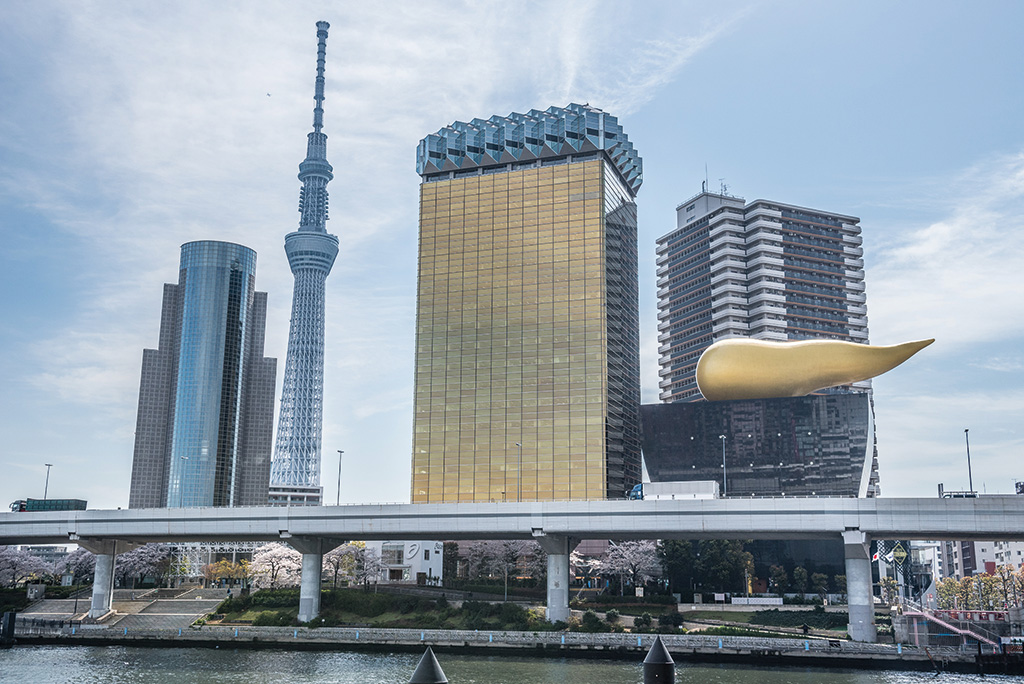
The Tokyo Skytree (to the left of the gold-sided building) rises 634 metres above the city skyline.
10. Cherry blossoms
Every spring, the city is transformed by an explosion of blossoms. I was lucky to be there to witness this joyous spectacle. Covering an area of 58 hectares and boasting more than a thousand cherry trees, Shinjuku Gyoen Garden is one of the best spots to experience the city’s great bloom. Ueno is another fine park – a large oasis in the heart of the city that’s great for blossom viewing. Here you’ll find Tokyoites picnicking on blue tarpaulins which they spread out to claim their patch beneath the cherry-tree boughs.
I also spent a morning ambling along the famed 4km section of the Meguro River flanked by more than 800 cherry trees. This iconic stretch, overhung with cherry branches, attracts tens of thousands of visitors and is a popular dating spot at night when the blossoms are dazzlingly illuminated.

Trip Planner
How to get There
Book your flights through an online website such as Travelstart. travelstart.co.za
Flights to Japan start from R12 000 with Emirates. emirates.com
South Africans need a visa. I acquired mine (R390) at the Japanese consulate in Cape Town. za.emb-japan.go.jp
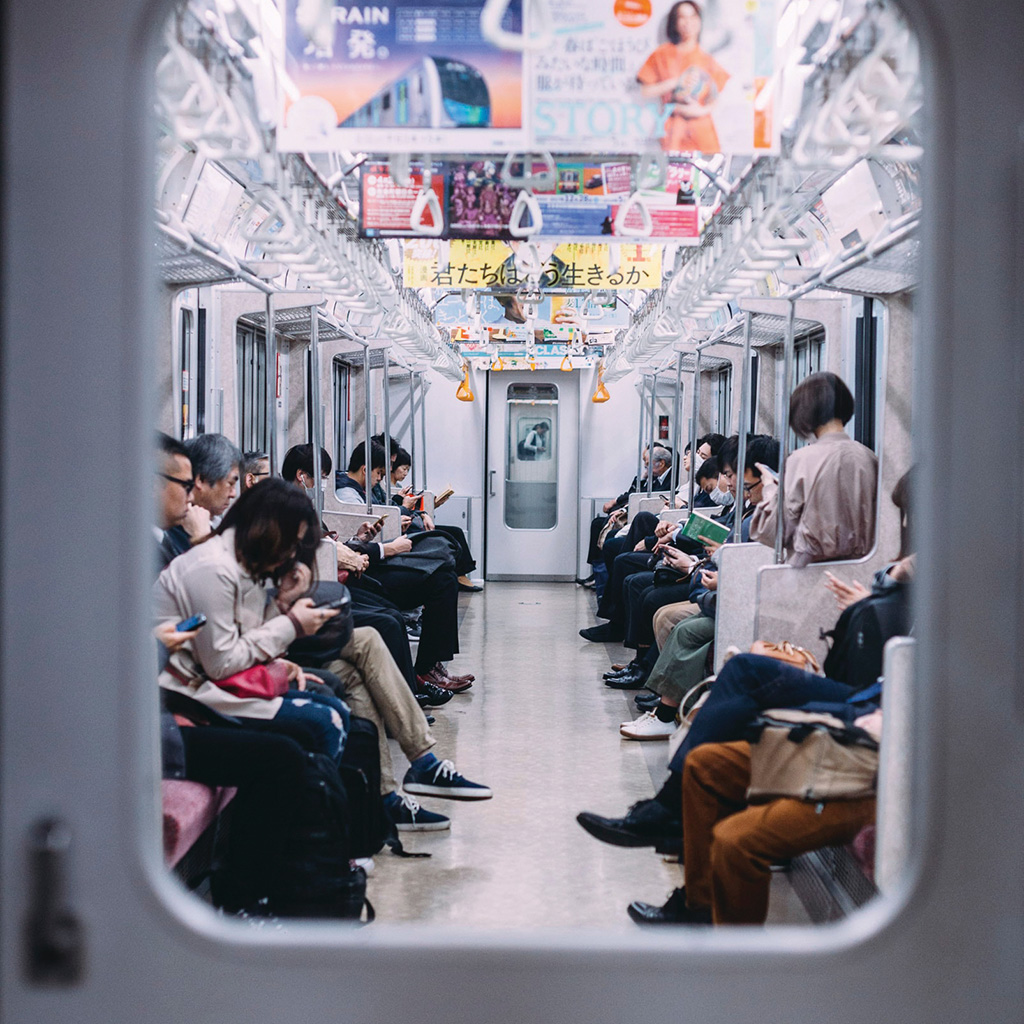
Tokyo subway (Photo Unsplash)
Getting Around
Tokyo’s public transport system can seem daunting at first, but once you have your bearings, it’s quick, easy and ultra efficient. The subway gets you everywhere, trains are frequent, and the locals are only too happy to help if you’re lost. Buy a Pasmo card (JPY2 000 or R284, top up at any station) for most public transport… and the city is your oyster. pasmo.co.jp
When to go
Spring (March to May) and autumn (September to November) are generally the best times, with little rain, clear skies and mild temperatures. You’ll also get to see the spring cherry blossoms or colourful autumn leaves.

Cherry traffic, Meguro River.
Take a walking tour
Walk Japan offers a range of options throughout the country as well as customised tours tailored to your interests. Wherever possible, you stay in local, Japanese-style accommodation. Guides are selected for their friendliness, knowledge and ability to communicate. I booked a two-day Tokyo walking tour which was informative, comprehensive and fun. (rates start from JPY28 000 or R3 970) walkjapan.com









